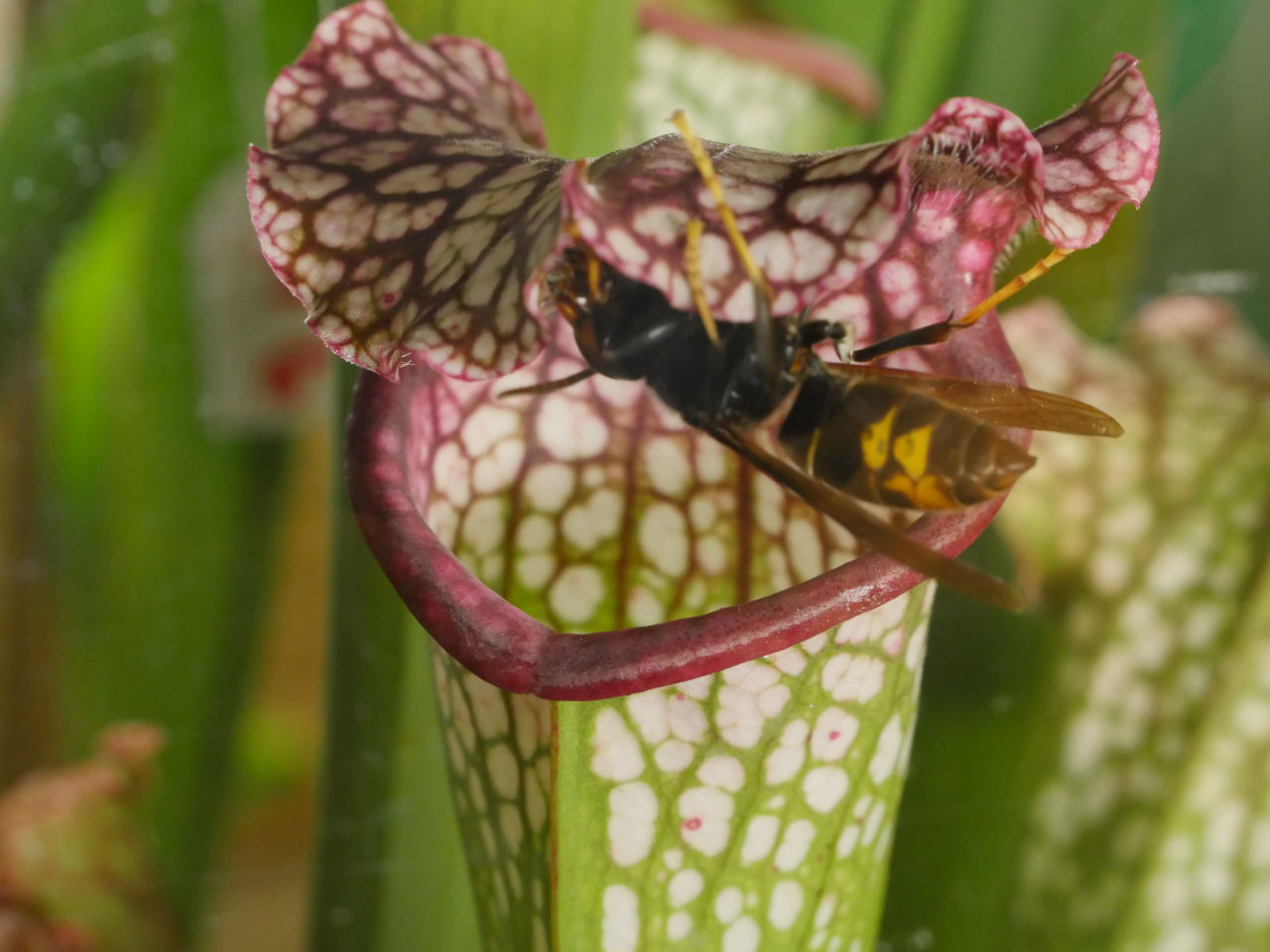Trapping Asian hornets by taking inspiration from nature
By studying how carnivorous plants attract Asian hornets, the Carnivespa project team has invented an ecological trap to combat this predator of honeybees. This project was supported by I-SITE MUSE as part of its 2017 research support program.

When she learned that carnivorous plants in the Nantes botanical garden were capturing Asian hornets, Laurence Gaume had an idea. If the trap set by Sarracenia plants was so effective, why not use it as inspiration to combat this invasive insect in Europe? "By studying the visual and olfactory lures that work specifically on Asian hornets, we can create a trap that targets this insect," explains the carnivorous plant specialist at the CNRS, who is delighted with the initial results of the Carnivespa project she has been leading for three years at the AMAP joint research unit.
So far, efforts to combat this hymenoptera have been inconclusive. Believed to have arrived by ship from China in 2004, the Vespa velutina hornet has since colonized the whole of France (http://frelonasiatique.mnhn.fr). This rapid expansion is not surprising when you consider the biology of the animal: nests can contain more than 10,000 individuals and release hundreds of future queens ready to found new colonies. However, this hornet is a formidable predator of honeybees. Hovering in front of hives, it decimates some of the foragers that leave the hive and paralyzes others that no longer dare to leave. In just a few years, the Asian hornet has become a pest species in Europe.
A crack team
To create her biomimetic trap, ecologist Laurence Gaume has assembled a crack team. Jean-Marie Bessière, a chemist specializing in volatile organic compounds (VOCs), is responsible for identifying the substances emitted by plants. Doris Gomez, a visual communication specialist at the Center for Functional and Evolutionary Ecology (CEFE), sought to analyze how visual signals from plants are perceived by hornets. Two entomologists specializing in hornets from the National Museum of Natural History (MNHN) and a bee specialist from the National Institute for Agricultural Research and the Environment (INRAE) complete the team.
To complete this multidisciplinary group, Laurence Gaume has brought in a beekeeper, Jean-Luc Delon, President of the Hérault Bee Health Protection Group, and a specialist in carnivorous plant cultivation, botanist and nurseryman Jean-Jaques Labat. The latter will contribute to the first experimental stage of the project: setting up six sites with carnivorous plant bogs and beehives. Every two months, the researcher collects the carnivorous plants' urns, the contents of which are analyzed by entomologist Claire Villemant. Eighteen surveys later, two species of pitcher plants stand out from the rest, with 70% of their pitchers having trapped hornets in the fall. This performance was confirmed by observations in a terrarium, which also showed that these plants receive more visits from hornets than expected, but that these visits do not necessarily result in capture. These plants are therefore very attractive, even if the trapping is imperfect.
Lures specific to hornets
But there is a problem. The urns contain insects other than hornets. The team is therefore seeking to identify the plant's lures that specifically attract hornets to prevent their trap from harming other insects. To study visual lures, Doris Gomez measures the reflectance of plants (the wavelengths reflected). She then cross-references this parameter with the hymenoptera's vision system. This modeling allows her to characterize the role of certain colors and contrasts in attracting hornets. "This may be able to ward off insects that have other vision systems," hopes Laurence Gaume.
With regard to olfactory signals, J-M Bessière identified a wide variety of VOCs in the odors emitted by plants, but the majority were terpenes. Laurence Gaume and Corentin Dupont, the doctoral student recruited for the project, then tested these VOCs to identify those responsible for attracting hornets. However, some of these also attract bees, which are not the target species. The researchers therefore decided to focus on the neurosensory sensors located on the insects' antennae. They studied the response of these sensors to the plant's VOCs, which they measured using electroantennography (a technique based on measuring the electrical signals from the antennae): "We found seven molecules that are specifically recognized by the antennae of hornets and not by those of bees. Now we need to verify that these molecules do indeed have an attractive effect," explains the project leader, who hopes to find the most selective lures by the end of 2021 in order to create "an effective and environmentally friendly trap."